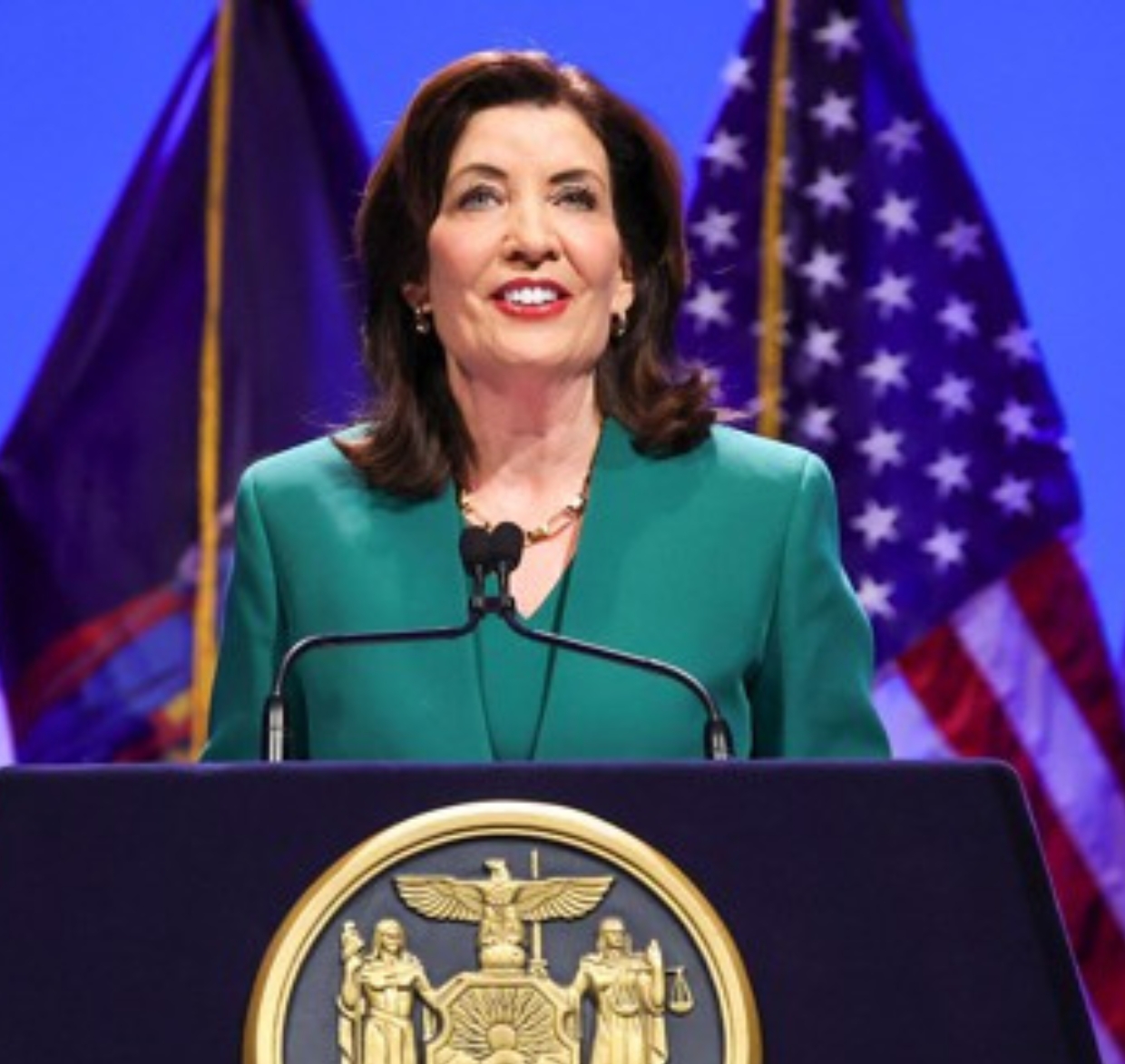Governor Kathy Hochul’s (D) 2025 State of the State address was a spectacle that blurred the line between politics and performance art, leaving many New Yorkers questioning its substance. Hosted at The Egg Theater in Albany instead of the traditional Assembly Chamber, the address opened with an elaborate forty-seven-minute prelude that included a high school marching band, a Tony-winning Broadway singer, a gospel choir, and a polished video montage. For some, it felt more like an awards show than a roadmap for tackling New York’s challenges.
The theatrical production raised eyebrows—and questions. Was the glamour meant to inspire confidence or distract from the governor’s failure to confront the state’s deep-seated issues?
Hochul’s speech promised a $3 billion inflation refund, expanded free school meals, and a $1,000 child tax credit. While these proposals may offer short-term relief, they do little to address the underlying problems driving New Yorkers out of the state. Suffolk County residents, in particular, are burdened with some of the highest property taxes in the nation, soaring living costs, and stagnant economic growth.
One of the governor’s boldest proposals—a $5 billion universal childcare plan—was met with skepticism over funding. While New York currently enjoys a $22 billion budget surplus, critics argue that such ambitious spending risks depleting resources without addressing systemic issues like economic stagnation and outmigration.
Many viewed Hochul’s address as a strategic move to shore up support ahead of a potentially contentious 2026 Democratic primary. Her lavish presentation comes as New York’s political landscape remains volatile. In 2022, then-Congressman Lee Zeldin (R-Shirley) came within striking distance of winning the governorship by focusing on issues like crime, taxes, and public safety—issues that resonated deeply with suburban and rural voters.
Hochul’s State of the State appeared to double as a defensive strategy against future challengers. However, the performance-heavy presentation felt more like campaign theater than a practical plan for governance.
Adding to the controversy, two taxpayer-funded videos highlighted Hochul’s personal story and policy agenda. Critics have questioned the appropriateness of using public money for what they see as thinly veiled campaign promotion.
Meanwhile, the pressing issues that define life in Suffolk County and beyond remain unresolved. Rising fentanyl overdoses, gang violence, delayed infrastructure projects, and underfunded schools are daily realities for many. Small businesses are struggling under the weight of heavy regulations, while high earners continue to consider relocating to states with more favorable tax environments.
The extravagant presentation couldn’t mask the glaring challenges. While expanded welfare programs and limited tax cuts might ease immediate hardships, they don’t tackle the root causes of New York’s economic malaise.
For Suffolk County residents, the need for real solutions is urgent. High property taxes, a lack of affordable housing, and public safety concerns demand immediate attention. Yet Hochul’s focus seemed more aligned with political survival than the needs of New Yorkers.
Though entertaining, the State of the State address left many questioning whether the governor is prepared to lead New York through its current crises. Beyond the dazzling performances, what New Yorkers truly need are policies that promote sustainable growth, ease financial burdens, and create meaningful opportunities for families and businesses.




